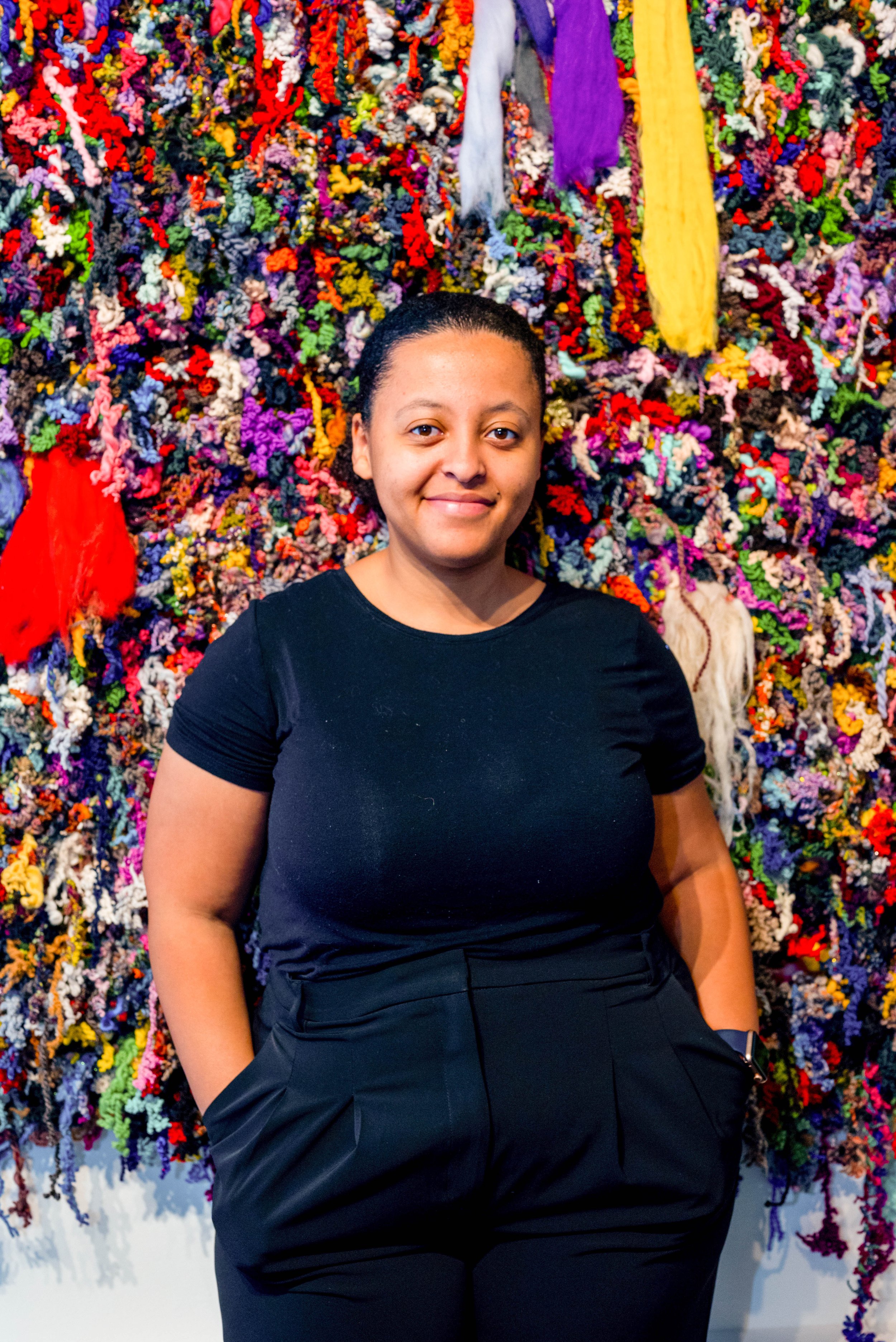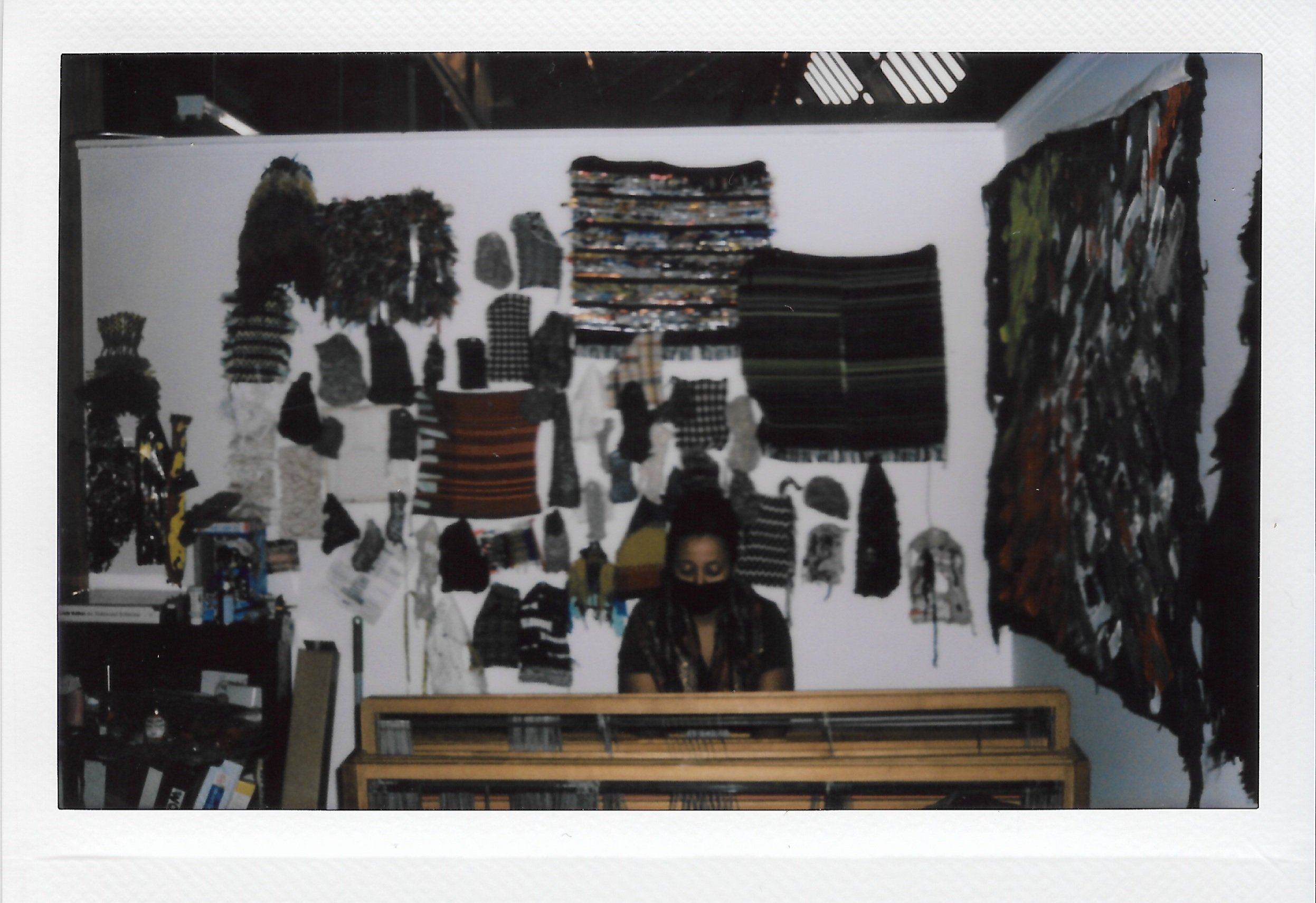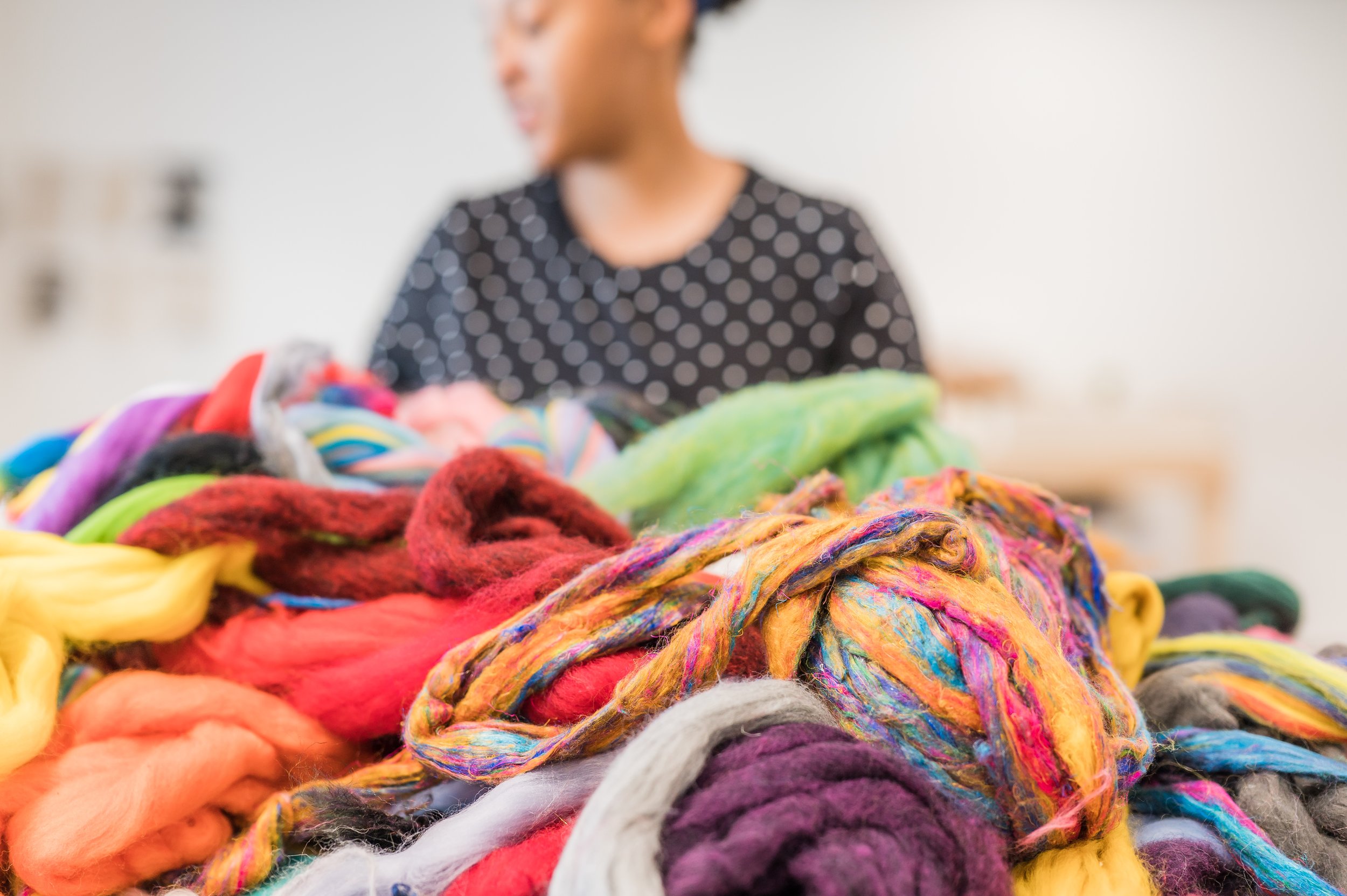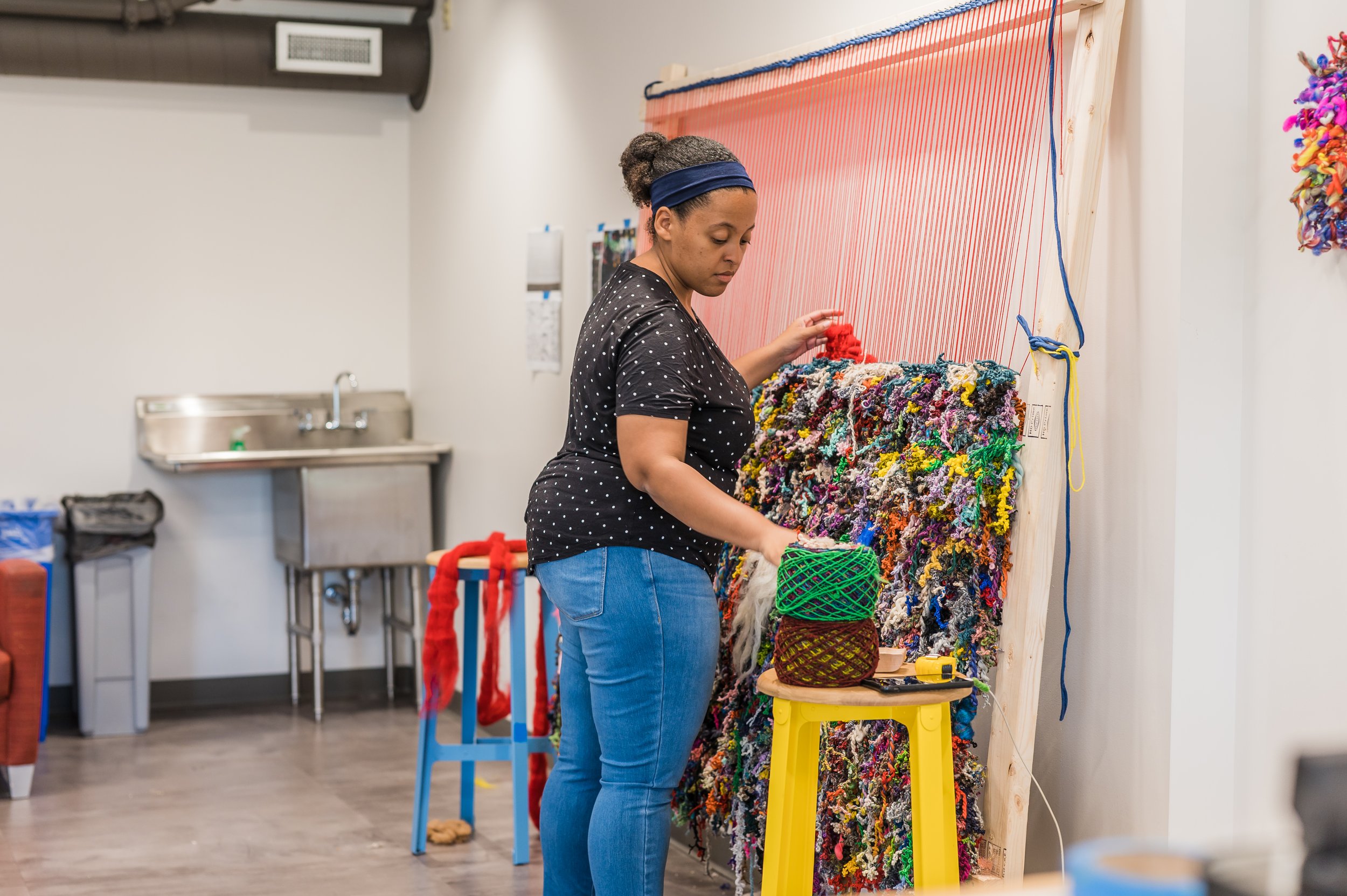Bryana Bibbs is a Chicago-based artist and educator who works at the intersections of textiles, printmaking, painting, and community-based practices. Bibbs earned her Bachelor of Fine Arts with an emphasis in Fiber and Material Studies at The School of the Art Institute of Chicago. She is the founder of The We Were Never Alone Project - a weaving workshop for victims and survivors of domestic violence and serves on the Surface Design Association’s Education Committee.
Recent solo exhibitions include Places (Edition 1) curated by Debra Kayes, Tiger Strikes Asteroid, Chicago, IL (2023); Changes, Chesterton Art Center, Chesterton, IN (2024); Unforeseen, 21c Museum Hotel, Chicago, IL (2024); two hundred and fifty-one days, curated by Elise Butterfield, Chicago Cultural Center, Chicago, IL (2025).
Recent group exhibitions include A More Human Dwelling Place curated by Myron Beasley, George Marshall Store Gallery, York, ME (2023); Sustenance, Portland Library, Portland, ME (2023); A Love Supreme McCormick House Reimagined curated by Norman Teague & Rose Camara, Elmhurst Art Museum, Elmhurst, IL (2024); Newcity Breakout Artists 2024 Exhibition, Chicago Artists Coalition, Chicago, IL (2024); Museum of Science & Industry Black Creativity - Booth 183 @ EXPO Chicago, Chicago, IL (2024); piecemeal, curated by darien hunter golston, Chicago Art Department, Chicago, IL (2024); Beyond: Tapestry Expanded curated by Erica Warren, The Richard E. Peeler Art Center, Greencastle, IN (2024); and All Fiber Show, Art Center of Burlington, Burlington, IA (2025).
Awards and residencies include The Weaving Mill - Remote W.A.R.P Residency, Chicago, IL (2020); Chicago Artists Coalition - HATCH Residency, Chicago, IL (2021/22); The Lunder Institute for American Art - Summer Residential Fellowship, Waterville, ME (2022); Surf Point Foundation - Artist Residency, York, ME (2022); and Arrowmont School of Arts and Crafts - Winter Pentaculum - Fiber, Gatlinburg, TN (2023); Breakout Artists: Chicago’s Next Generation of Image Makers, Newcity Magazine, Chicago, IL (2024).
Her works has been reviewed and featured in publications including, Warp & Weft Magazine, The Coastal Post, The Strategist in New York Magazine, TATTER Journal, UPPERCASE Magazine, New Visionary Magazine, Newcity Magazine, Artdose Magazine, CBS2 Chicago, Sixty Inches from Center, and LUXE Interiors + Design - Chicago.
Recent commissions include Three H for NeoCon 2024, the Design Museum of Chicago, and the Art Institute of Chicago. Collections include Delta Airlines, Inc. and private collections.
Bibbs has taught and designed programs with organizations and institutions such as, The Art Institute of Chicago, Chicago, IL; Awakenings Art, Chicago, IL; The Evanston Art Center, Evanston, IL; The Design Museum of Chicago, Chicago, IL; and The Elmhurst Art Museum, Elmhurst, IL.
Bibbs lives and works in Chicago, Illinois.
Telling stories of trauma, grief, loss, and mental health is not always easy, based on the stigmas in our society, which is how it became a central motivation in my practice. There are parallels between the slow navigation of personal experiences and the rhythmic textile techniques of hand-carding, hand-spinning, and handweaving, both of which are a form of transformative repetition.
While working between these traditional and experimental textile processes, my large-scale weavings navigate past experiences in what I consider to be "chapters." Small-scale weavings, such as those from the Journal Series, are similar to handwritten journaling, which documents daily observations with found objects and materials. With ongoing tactility and material investigation, the works inspire an internal space externalized through the play of intricacy, color, and form, often inspired by the fluidity of mark-making and tone associated with painting. As I want my works to speak to people, their display—especially in juxtaposing scale and texture—invites intuitive engagement and consideration of the viewers' own physical and conceptual associations within the pieces.
Pressure printmaking are extensions of my textile practice. These prints allow me to think through ideas of presence and absence, time, preservation, process, and materiality. Through printmaking, I continue to capture and navigate my experiences, the objects of significance in my life, and the connections between the weavings and the memories tied to them.
Through building community, artworks, and conversations together, I hope to support others in creating transparency around their stories of trauma and grief and work towards ending the stigma.




